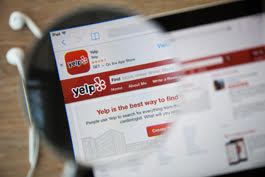The U.S. healthcare system is entering a new era for consumers. Consumers have become engaged ‘healthcare stakeholders’ and are demanding greater understanding of their options around care and costs. As a result, consumers (aka patients, employees, and health plan members), are starting to realize that their influence (which has been steadily building over the last decade) have meaningful clout in the healthcare economy. Below are four relevant initiatives we assessing:
The U.S. healthcare system is entering a new era for consumers. Consumers have become engaged ‘healthcare stakeholders’ and are demanding greater understanding of their options around care and costs. As a result, consumers (aka patients, employees, and health plan members), are starting to realize that their influence (which has been steadily building over the last decade) have meaningful clout in the healthcare economy. Below are four relevant initiatives we assessing:
- Health programs, care reminders, and incentives. Consumers want easy access to online tools and resources that enable care direction and lifestyle management including programs like:
- Medication Therapy Management tools that connect patients with physicians and pharmacists.
- Care reminders that can be securely pushed to consumers through electronic messaging mediums such as phone, email, and text message.
- Incentives can be a strong driver towards encouraging healthy behavior with insurance discounts for health and wellness activities like joining a health club.
- Better options, access to care, and transparency
- Allowing patients to take more control of their care options and reviewing the costs associated with those procedures is a major factor in healthcare consumerism.
- By providing education, pricing data, and easily accessible online content, patients can make more informed decision about care, which drives patient awareness, improves adherence, and transparency.
- A ‘retail-like’ healthcare experience
- Customer satisfaction surveys typically rank ‘shopping for health insurance’ at or near the bottom of most industries.
- Traditional consumer expansion about a ‘retail’ shopping experience has been lost in health insurance, and consumers need online tools such as portals, comparison engines and programs for population health management (PHM). Opening this business-to-consumer (B2C) channel will create more clarity around cost, treatment options, and alternatives.
- Flexible payment options and improved customer service. Most consumers would agree that managing the payment process for healthcare related expenses can be a nightmare.
- Wouldn’t it be great if a single trip the hospital resulted in one bill that included all charges and a single explanation of benefits (EOB)? The lack of quality and continuity in customer service and support creates additional consumer frustration. Traditional customer relationship management (CRM) software tools that provide a 360 degree view of the customer in other verticals such as retail and financial services are only beginning to penetrate the healthcare market. Consumers want tools that provide more flexible payment options, simplicity around billing and cost, and an improved experience with customer service.
As consumers become more engaged healthcare stakeholders, the demand will increase for greater understanding of their care options, access, transparency, and costs. Until recently there was little incentive for insurance companies and provider groups to change the model, and holding healthcare organizations accountable for these changes now is engendering consumer choice via competition, not legislation. For more, check out our recent Principals Forum interview on the drivers of consumerism in healthcare and let us know what you think.
Michael Boardman
![]() Michael Boardman is an associate at TripleTree covering the healthcare and technology industries, specializing in clinical software solutions. Follow Michael on Twitter or e-mail him at mboardman@triple-tree.com.
Michael Boardman is an associate at TripleTree covering the healthcare and technology industries, specializing in clinical software solutions. Follow Michael on Twitter or e-mail him at mboardman@triple-tree.com.








